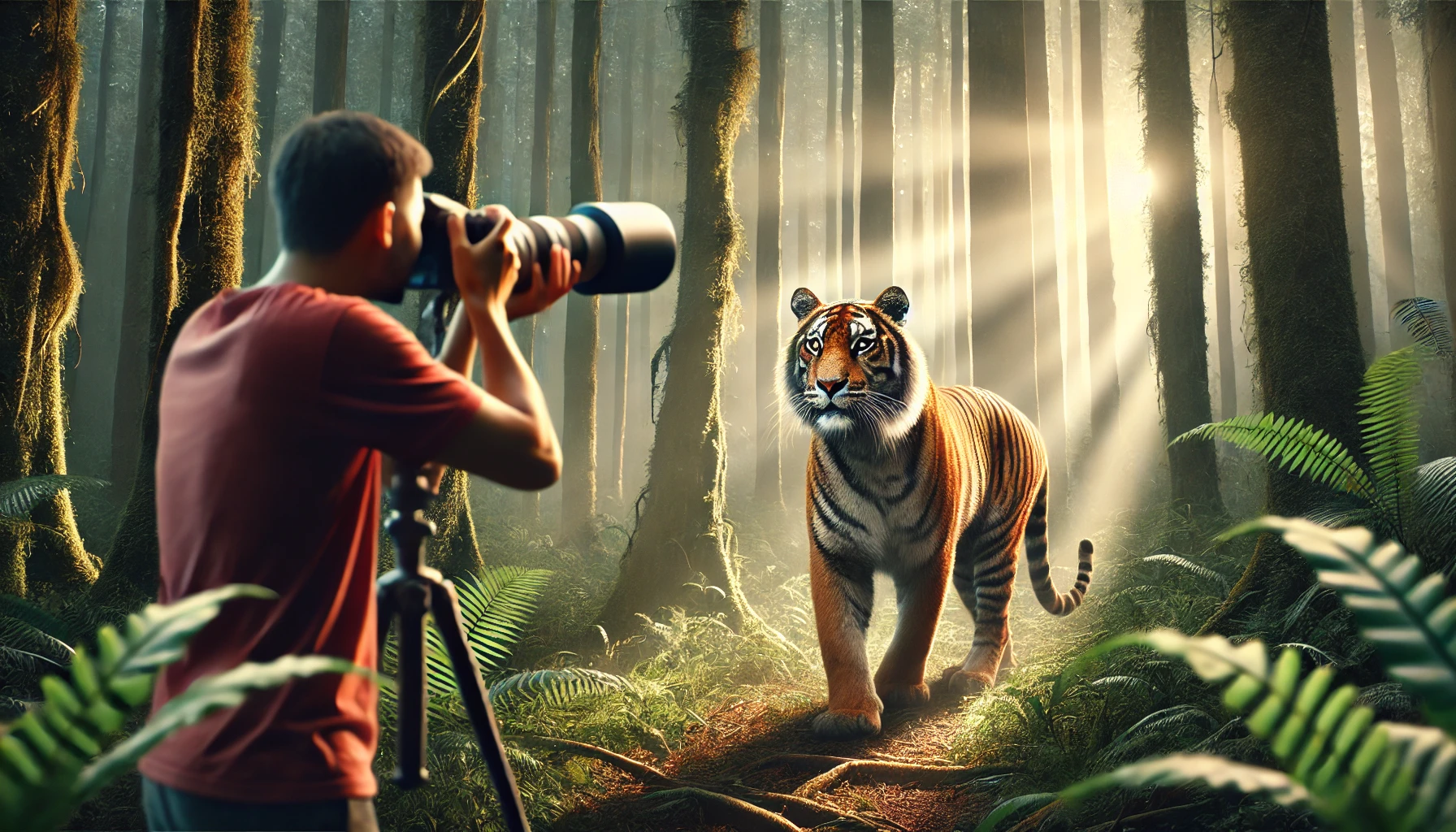Wildlife photography requires patience, skill, and respect for nature. Capturing animals in their natural habitat can result in stunning and authentic images that tell a story. Here’s a guide to help you master wildlife photography.
1. Research Your Subject
Understand the behavior, habitat, and active times of the animals you’re photographing. This knowledge helps you anticipate their movements and capture authentic moments.
Pro Tip: Visit wildlife reserves or national parks where animals are more accustomed to human presence.
2. Use the Right Gear
Wildlife photography often requires specialized equipment:
- Telephoto Lenses: Capture distant subjects without disturbing them (e.g., 300mm or 400mm).
- Tripods or Monopods: Provide stability for heavy lenses.
- Binoculars: Help locate animals before setting up your shot.
Pro Tip: Use a lens hood to reduce glare and protect your equipment in harsh environments.
3. Shoot at Eye Level
Photographing animals at their eye level creates a connection between the subject and viewer. This perspective makes your images more engaging and personal.
Pro Tip: Get low or use natural cover to align your camera with the animal’s gaze.
4. Focus on Action and Behavior
Capture dynamic moments such as hunting, playing, or interacting with their environment. These behaviors add life and context to your photos.
Pro Tip: Use burst mode to capture fast-moving action.
5. Consider Lighting
Natural light can enhance the texture and detail of an animal’s fur, feathers, or scales.
- Golden Hour: Provides warm, soft light perfect for dramatic wildlife shots.
- Overcast Days: Minimize harsh shadows and offer even lighting.
Pro Tip: Avoid using flash to prevent startling the animals.
6. Practice Patience and Ethics
Respect the animals and their habitat. Avoid disturbing or feeding them to get a better shot.
Pro Tip: Use a silent mode on your camera to reduce noise that might scare away wildlife.
Checklist for Wildlife Photography
- Is your gear set up for quick adjustments?
- Are you capturing dynamic or behavioral moments?
- Have you prioritized safety and respect for the animals?
Wildlife photography is as much about the experience as it is about the final image. By blending preparation, technical skill, and a deep respect for nature, you’ll create stunning photos that celebrate the beauty of wildlife.
